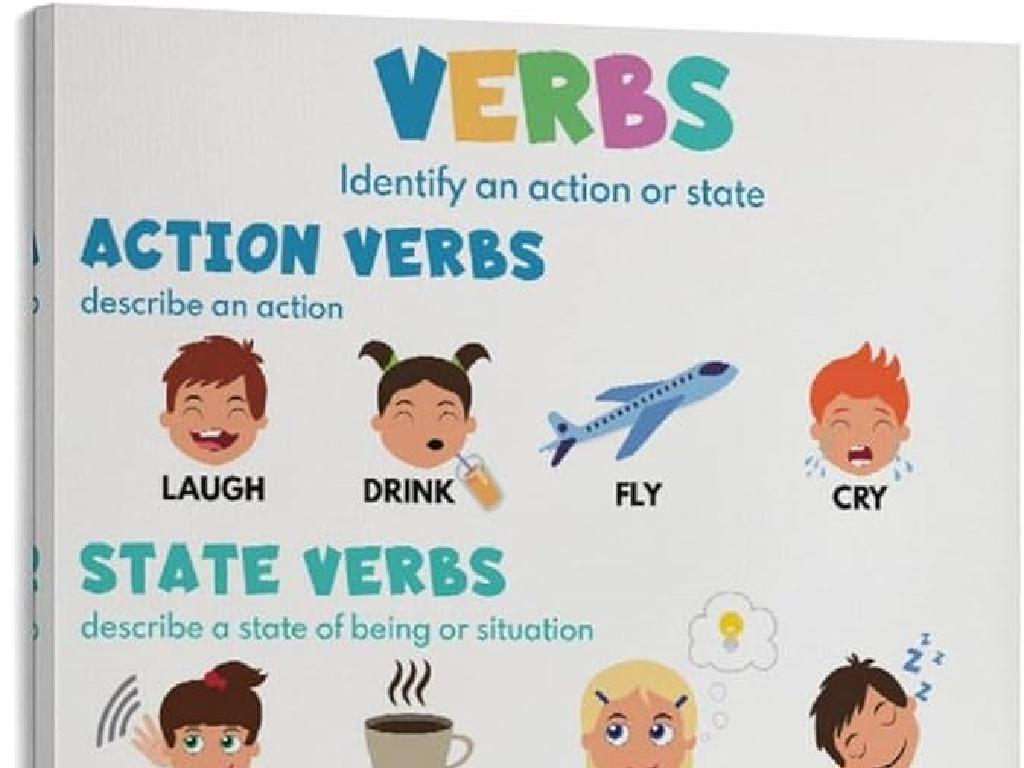Name Countries Of Asia: Region 1
Subject: Social studies
Grade: Sixth grade
Topic: Asia: Geography
Please LOG IN to download the presentation. Access is available to registered users only.
View More Content
Exploring Asia: Region 1 Countries
– Asia: Earth’s largest continent
– Diversity in geography and culture
– From vast deserts to lush rainforests, and rich traditions to modern cities
– Varied climates across Asia
– Ranges from Siberian cold to Arabian heat
– Focus: Countries of Asia – Region 1
– Learn names and locations of specific countries like China, Japan, and South Korea
|
Begin with an introduction to Asia, highlighting its status as the largest continent on Earth. Emphasize the vast diversity found within its borders, including the variety of geographical landscapes, cultural richness, and climatic zones. The objective of this lesson is to familiarize students with the countries of Asia, specifically focusing on Region 1, which includes East Asian countries such as China, Japan, and South Korea. Use maps and visuals to aid in teaching, and encourage students to recognize these countries on a map. Discuss some key facts about each country to pique students’ interest in the region’s diversity.
Exploring East Asia: Region 1
– Asia’s diverse regions
– Zoom in on East Asia
– East Asia includes China, Mongolia, and the Koreas
– Countries of East Asia
– China, Mongolia, North Korea, South Korea, Japan, Taiwan
– Cultural and geographical diversity
– Each country has unique traditions and landscapes
|
This slide introduces students to the concept of regions within Asia, with a focus on East Asia as Region 1. Begin by explaining the diversity of Asia’s regions in terms of climate, culture, and geography. Then, narrow down to East Asia, highlighting its key countries: China, Mongolia, North Korea, South Korea, Japan, and Taiwan. Discuss the unique characteristics of each country, such as China’s vast size and ancient civilization, Mongolia’s nomadic heritage, the distinct political systems of North and South Korea, Japan’s technological advancements, and Taiwan’s vibrant democracy. Emphasize the cultural and geographical diversity within the region, encouraging students to appreciate the differences and similarities among these neighboring countries.
East Asia’s Major Physical Features
– Explore East Asia’s geography
– Mountains: The Himalayas
– World’s highest mountain range
– Plateaus: Tibetan Plateau
– Known as the ‘Roof of the World’
– Rivers: Yangtze and Yellow River
– Two of Asia’s longest rivers
|
This slide aims to introduce students to the prominent physical features of East Asia, a region rich in diverse landscapes. The Himalayas, which include Mount Everest, the highest peak in the world, are a significant mountain range in Asia that influences the climate and culture of the region. The Tibetan Plateau, often referred to as the ‘Roof of the World’, stands at an average elevation of over 4,500 meters. The Yangtze and Yellow Rivers are crucial to the region’s agriculture, economy, and history. Encourage students to locate these features on a map and discuss their importance to the local environment and human activities. This will help students appreciate the relationship between geography and the development of civilizations.
Country Profiles: China
– Capital: Beijing
– Population and culture
– Over 1.4 billion people with diverse cultures
– Famous Landmarks
– Great Wall, Forbidden City represent rich history
– Understanding China’s role
– A major global influence in economy and politics
|
This slide introduces students to China, one of the most significant countries in Asia’s Region 1. Start by discussing Beijing, the capital, and its importance in Chinese governance and culture. Then, move on to the population, highlighting the vast number of people and the cultural diversity within China, including languages, traditions, and holidays. Discuss famous landmarks like the Great Wall of China and the Forbidden City, explaining their historical and cultural significance. Lastly, touch on China’s role in the world today, including its economic and political influence, to provide students with a broader understanding of the country’s global impact. Encourage students to think about how China’s geography has influenced its development and role in the world.
Country Profiles: Japan
– Capital: Tokyo
– Population insights
– Over 126 million people, rich in traditions and technology
– Famous Landmarks
– Mount Fuji, the highest peak, and Tokyo Tower, a symbol of modernity
– Cultural Highlights
– Explore tea ceremonies, sumo wrestling, and anime
|
This slide introduces students to Japan, an important country in Asia’s Region 1. Start by discussing Tokyo, the bustling capital city known for its mix of modern and traditional architecture. Highlight Japan’s population, emphasizing its unique blend of ancient cultural practices alongside cutting-edge technology. Discuss landmarks such as Mount Fuji, a sacred site and iconic symbol of Japan, and the Tokyo Tower, which represents Japan’s post-war rebirth and modernity. Engage students by exploring cultural elements like tea ceremonies, sumo wrestling, and the global influence of Japanese anime. Encourage students to think about how a country’s landmarks and culture contribute to its identity on the world stage.
Country Profiles: The Koreas
– Korea’s historical division
– Korea was divided after World War II into North and South.
– North Korea: Capital Pyongyang
– Known for its political regime and isolation.
– South Korea: Capital Seoul
– Renowned for its technology and culture, like K-pop.
– Contrasts between the Koreas
|
This slide aims to introduce students to the division of Korea into two distinct countries: North Korea and South Korea. Begin by explaining the historical context of Korea’s division post-World War II and the establishment of the 38th parallel. Highlight the capitals of each country, Pyongyang for North Korea and Seoul for South Korea, and discuss the significant differences in their political systems, economies, and cultures. Emphasize the contrast between North Korea’s isolation under a strict regime and South Korea’s global cultural influence and technological advancements. Encourage students to explore how the division of Korea has led to two very different paths for the countries.
Country Profiles: Mongolia and Taiwan
– Mongolia: Ulaanbaatar
– Capital city and cultural heart
– Nomadic traditions thrive
– Herding lifestyle, yurts, and horses
– Taiwan: Taipei
– Capital city known for skyscrapers
– A hub for technology
– Leading in electronics and semiconductors
|
This slide introduces students to Mongolia and Taiwan, focusing on their capitals and unique cultural and economic attributes. Mongolia, with its capital at Ulaanbaatar, is renowned for its vast steppes and nomadic culture, where traditional herding lifestyles continue to flourish. Taiwan’s capital, Taipei, is a modern metropolis that plays a significant role in the global technology sector, especially in electronics and semiconductors. Encourage students to explore these countries’ geographical locations, cultural significance, and economic contributions to the Asian continent and the world. Discuss the contrast between the traditional, nomadic way of life in Mongolia and the advanced technological environment in Taiwan.
Interactive Map Quiz: Locating Asian Countries
– Engage with the map activity
– Identify countries on the map
– Students take turns to point out countries like China, India, Japan
– Review challenging countries
– Focus on areas students find difficult, like distinguishing between Nepal and Bhutan
– Reinforce geography knowledge
|
This interactive map quiz is designed to help students actively participate in the learning process by identifying countries in Asia on a map. It’s a hands-on activity that will reinforce their knowledge of Asian geography. Encourage each student to come up to the map and point to a country they remember. If a student struggles to identify a country, use this as an opportunity for a quick review. Pay special attention to countries that multiple students find challenging, and consider using mnemonic devices or associations to help them remember. This activity not only solidifies their understanding of the region’s geography but also builds confidence in their map-reading skills.
Class Activity: Asia’s Region 1 Travel Brochure
– Select a country from Asia’s Region 1
– Research the country’s details
– Find the capital city, official language
– Include capital, language, and facts
– Identify one significant physical feature and cultural fact
– Design your travel brochure
– Use pictures, texts, and creativity to make your brochure appealing
|
Students will choose a country from Asia’s Region 1, which includes countries like China, Japan, Mongolia, and South Korea. They will research to find the capital, official language, a notable physical feature such as a mountain or river, and a cultural fact, such as a traditional festival or cuisine. This activity will help students apply their knowledge of geography and culture to a creative task. For the brochure, they can use paper or digital tools. Encourage creativity and accuracy. Possible activities: one group can work on China and focus on the Great Wall, another on Japan with Mount Fuji, etc. This will help them learn about diversity within the region.
Exploring Asia: Region 1 – Recap & Homework
– Recap: Countries of Asia Region 1
– Homework: Finish travel brochure
– Include facts, pictures, and why someone should visit
– Explore countries further at home
– Use books, internet, documentaries for more info
– Prepare for brochure presentation
|
This slide aims to summarize the lesson on the countries of Asia: Region 1 and to set expectations for the homework assignment. The homework involves completing a travel brochure that students have been working on, which should showcase their knowledge of the region’s countries, cultures, and attractions. Encourage students to be creative and to include interesting facts and visuals that would entice someone to visit. Remind them to use reliable sources for additional research at home. Next class, students will present their brochures, which will help develop their public speaking skills and allow them to share their insights with the class.






